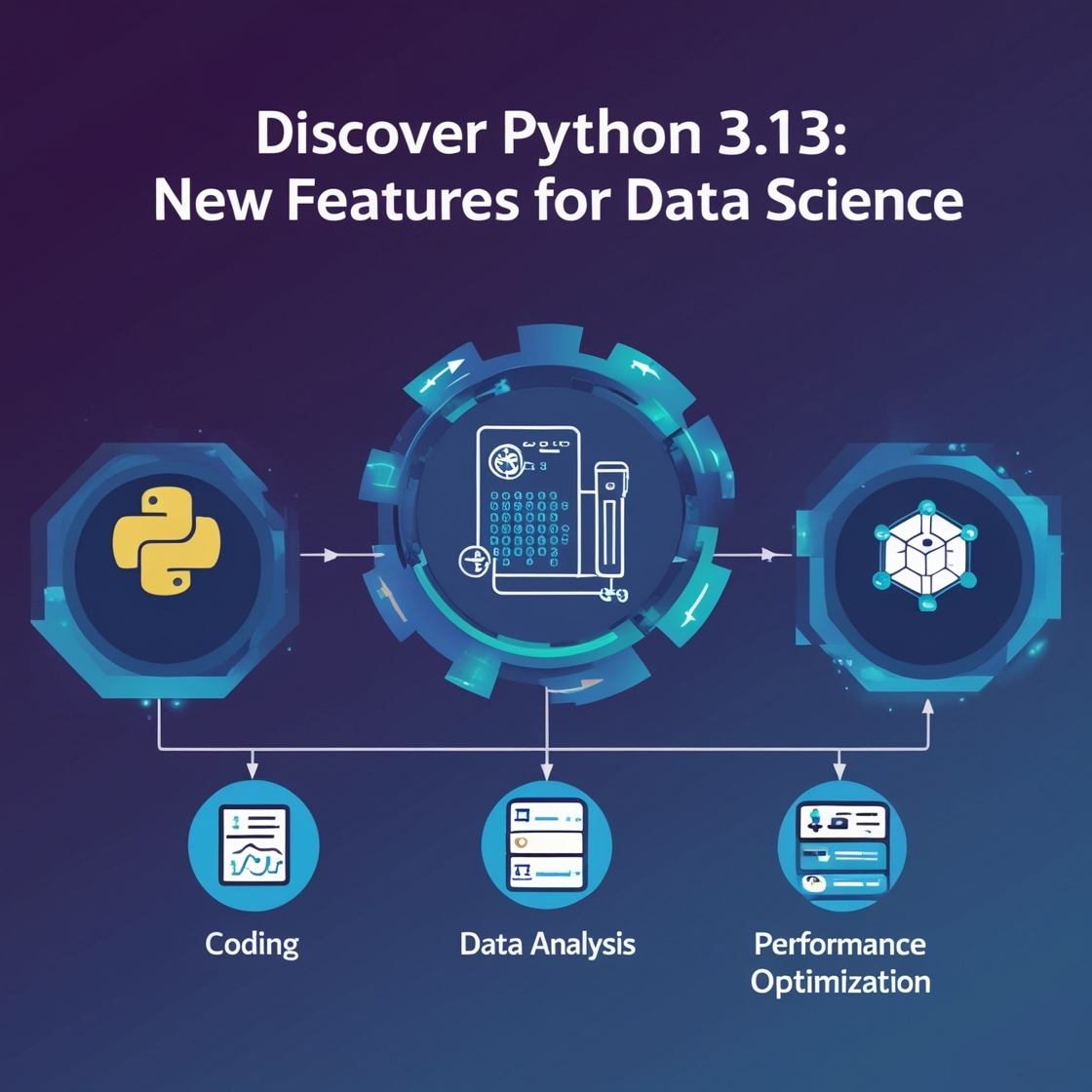Python 3.13 Must-Know Features for Data Science in 2024
1.Introduction to Python 3.13 for Data Science
How Python 3.13 Fits into Data Science in 2024Python 3.13, released in 2024, introduces exciting upgrades tailored for data science, making it a must-have tool for both experts and beginners alike. With the new and improved Just-In-Time (JIT) compiler, Python 3.13 now delivers faster execution speeds, which is essential when working with large datasets in data science projects. Moreover, for those new to Python, its simplified syntax and enhanced libraries, such as NumPy, Pandas, and SciPy, make it easier than ever to jump into machine learning and data analysis. In short, Python 3.13 is designed to boost productivity and performance in every data science workflow.
Why Python 3.13 is Vital for Data Scientists
The improved memory management and multithreading features of Python 3.13 make AI and large data processing workloads more efficient. In addition to serving novice programmers, these upgrades guarantee that Python will continue to be a top option for data scientists hoping to innovate in 2024. Python 3.13 is poised to rule the data science landscape this year because to its adaptability and broad variety of uses.

2. Revamped Interactive Interpreter for Faster Prototyping
New Multi-Line Editing and Code Navigation
Unlocking the potential of data science has never been easier with the latest advancements in Python. Python 3.13 introduces exciting features for data science, notably the new multi-line editing and code navigation tools. These enhancements streamline coding workflows, enabling data scientists to efficiently edit and navigate complex scripts. With improved readability and debugging capabilities, Python 3.13 enhances productivity and reduces errors, making it a must-have for data analysis projects. Explore these innovative tools to elevate your Python coding experience and accelerate your data-driven insights.
Impact of REPL Improvements on Data Science Workflows
In the world of data science, REPL improvements greatly enhance productivity. The updated REPL interface supports quick data visualization, making it easier to experiment with large datasets. These enhancements lead to more effective model testing, allowing for rapid iteration and adjustments. By cutting down on execution times and making the workflow more interactive, data scientists can focus on generating deeper insights and refining models with real-time data processing.
3. Global Interpreter Lock (GIL) Changes and Free-Threading
Understanding Python’s New GIL-Free Mode
With the release of Python 3.13, data scientists can unlock new performance levels thanks to the innovative GIL-free mode. This feature enhances multi-threading capabilities, allowing for true parallelism and faster data processing. With improved error messages and overall performance enhancements, Python 3.13 equips data scientists to manage large datasets more effectively. .
Benefits of Free-Threading for Multi-Core Processing in Data Science
Revolutionizing multi-core processing, the introduction of free threading in Python 3.13 is a game-changer for data science. This update enhances concurrency and improves Global Interpreter Lock (GIL) management, allowing Python to utilize multiple CPU cores more effectively than ever before. As a result, data manipulation becomes faster, real-time analytics more responsive, and machine learning model training significantly more efficient.
4. Just-in-Time (JIT) Compilation for Performance Gains
The Just-In-Time (JIT) compiler enhances performance by dynamically compiling Python code into machine code during runtime. This speeds up execution, particularly for repetitive tasks and CPU-bound operations. Unlike traditional interpretation, JIT compiles parts of the code “just in time” for execution, optimizing frequently used functions. This feature is particularly useful for data-heavy tasks in machine learning and scientific computing, providing significant performance improvements without changing the Python source code.
5. Enhanced Random Module for Simulation and Testing
Elevate your simulation and testing capabilities with Python 3.13’s Enhanced Random Module. This updated module introduces a command-line interface for generating random integers, floats, and even words from custom lists, ensuring more versatile testing scenarios. With the experimental Just-in-Time (JIT) compiler and the ability to disable the Global Interpreter Lock (GIL), developers can achieve better performance and multi-threading support.
6. Improved Debugging and Error Handling for Large Codebases
Improving debugging and error handling in large codebases is crucial for enhancing software performance and reliability. With Python 3.13’s new features, such as well-defined semantics for locals() aiding debuggers and improved error messaging, developers can streamline their debugging processes. The addition of a preliminary JIT compiler also paves the way for better performance in large applications, enabling quicker resolution of issues. Embrace these enhancements to optimize your coding practices and boost efficiency in extensive projects.
7. Deprecated Modules in Python 3.13 and Their Replacements
Navigating the evolving landscape of Python programming is crucial for developers aiming to enhance their projects. As Python 3.13 rolls out, it brings with it the removal of several deprecated modules, including cgi and telnetlib, prompting a shift toward more efficient alternatives. The latest version not only enhances error messaging and introduces a groundbreaking experimental Just-In-Time (JIT) compiler, but also ensures a smoother development experience. To stay ahead in your Python journey, embrace these changes and explore the recommended replacements for deprecated modules (Python Documentation) (Python Tutorials – Real Python) (Python.org).
Conclusion: Why Python 3.13 is Essential for Data Science in 2024
In the dynamic realm of data science, staying ahead requires leveraging the latest innovations. The release of Python 3.13 in 2024 marks a significant leap forward, featuring a revamped interactive interpreter that enables seamless multiline editing and enhanced error messages for greater clarity. Additionally, the experimental Just-in-Time (JIT) compiler promises to optimize performance, crucial for handling vast datasets and complex computations. With these powerful advancements, Python solidifies its reputation as the premier language for data science, empowering professionals to work more efficiently and effectively in their projects .








